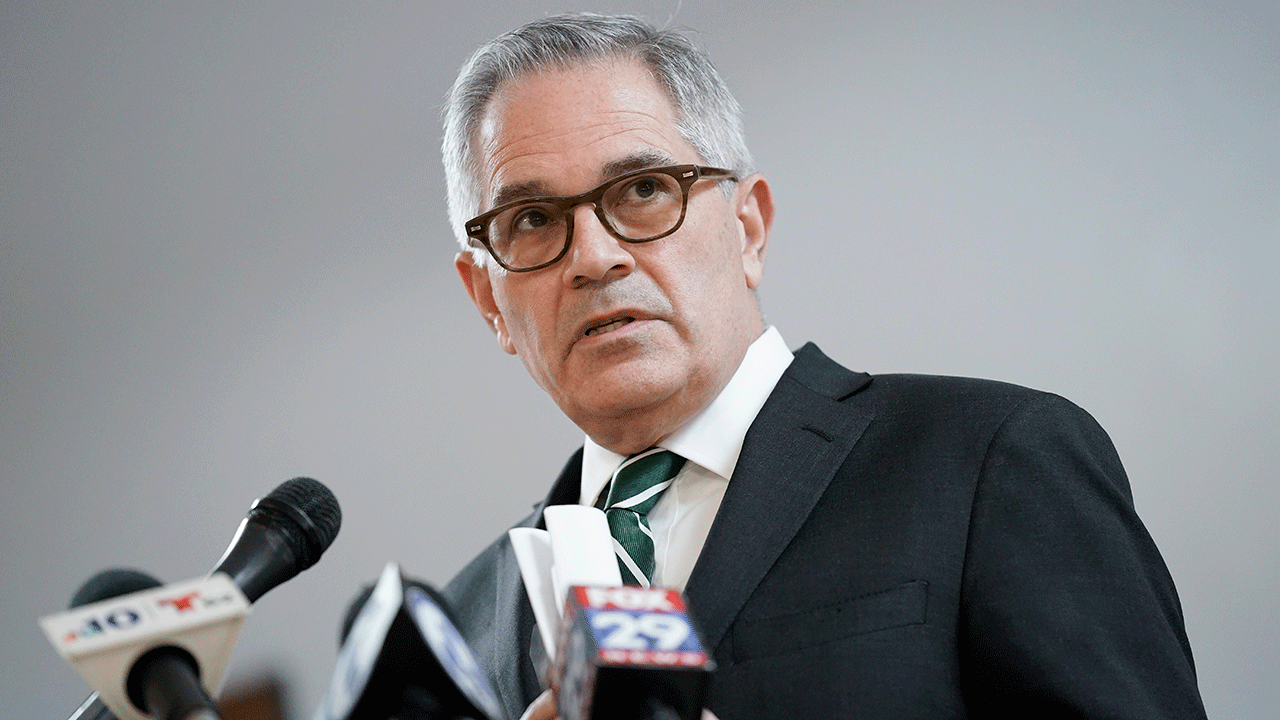Big banks are jumping headfirst into the AI race. Over the past year, Wall Street’s largest names — including Goldman Sachs , Bank of America , Morgan Stanley , Wells Fargo to JPMorgan Chase — ramped up their generative artificial intelligence efforts with the aim of boosting profits. Some are striking deals and partnerships to get there quickly. All are hiring specialized talent and creating new technologies to transform their once-stodgy businesses. The game is still in its early innings, but the stakes are high. In his annual shareholder letter, JPMorgan CEO Jamie Dimon compared artificial intelligence to the “printing press, the steam engine, electricity, computing, and the internet.” The banks that can get it right should increase productivity and lower operational costs — both of which would improve their bottom lines. In fact, AI adoption has the potential to lift banking profits by as much as $170 billion, or 9%, to more than $1.8 trillion by fiscal year 2028, according to research from Citi analysts . Early-stage generative AI use cases are often for “augmenting your staff to be faster, stronger and better,” said Alexandra Mousavizadeh, co-CEO and co-founder of AI benchmarking and intelligence platform Evident Insights. “Over the course of the next 12 to 18 to 24 months, I think we’re going to see [generative AI] move along the maturity journey, going from internal use cases being put into production [to more] testing external-facing use cases.” Companies are only just starting to grasp the promise of this tech. After all, it was only following the viral launch of ChatGPT in late 2022 that the world outside of Silicon Valley woke up to the promise of generative AI. OpenAI’s ChatGPT, backed by Microsoft and enabled by Nvidia chips, sparked an investor stampede into anything AI. The AI trade also pushed corporate boardrooms in three ways: find use cases for the tech, strike partnerships to enable it, and hire specialized employees to build and support it. MS YTD mountain Morgan Stanley YTD AI use cases for key businesses Morgan Stanley was among the first on Wall Street to publicly embrace the technology, unveiling two AI assistants for financial advisors powered by OpenAI. Launched in September 2023, the AI @ Morgan Stanley Assistant gives advisors and their staff quick answers to questions regarding the market, investment recommendations, and various internal processes. It aims to free up employees from administrative and research tasks to engage more with their clients. Morgan Stanley this summer rolled out another assistant , called Debrief, which uses AI to take notes on financial advisors’ behalf in their client meetings. The tool can summarize key discussion topics and even draft follow-up emails. “Our immediate focus is on using AI to increase the time our employees spend with clients. This means using AI to reduce time-consuming tasks like responding to emails, preparing for client meetings, finding information, and analyzing data,” said Jeff McMillan, head of firmwide AI for Morgan Stanley. He made these comments in a statement emailed to CNBC last week. “By freeing up this time, our employees can focus more on building relationships and innovating.” In the long run, AI could help Morgan Stanley’s wealth business get closer to reaching management’s goal of more than $10 trillion in client assets . In July, the firm reported client assets of $7.2 trillion. To be sure, McMillan said in June it would take at least a year to determine whether the technology is boosting advisor productivity. If it does, that would welcomed news for shareholders after Morgan Stanley’s wealth segment missed analysts’ revenue expectations in the second quarter . WFC YTD mountain Wells Fargo YTD It’s not just Morgan Stanley. Our other bank holding Wells Fargo has its own virtual AI assistant. Dubbed Fargo , it helps retail customers get answers to their banking questions and execute tasks such as turning on and off debit cards, checking credit limits, and offering details for transactions. Fargo, powered by Google Cloud’s artificial intelligence, was launched in March 2023. For a large money center bank like Wells Fargo — one that’s historically catered to Main Street — the Fargo assistant could bolster the bank’s largest reporting segment. The consumer, banking and lending unit in the second quarter accounted for roughly 43% of the $20.69 billion booked in companywide revenue. Striking AI deals, landing partnerships None of this would be possible without partnerships. Big banks have tapped startups and tech behemoths alike for access to their large language models (LLMs) to build their own AI products. In addition to Morgan Stanley’s OpenAI deal and Wells Fargo’s ties with Google, Deutsche Bank also partnered with Club name Nvidia in 2022 to help develop apps for fraud protection . BNP Paribas announced on July 10 a deal with Mistral AI — often seen as the European alternative to OpenAI — to embed the company’s LLMs across its customer services, sales and IT businesses. Shortly after that, TD Bank Group signed an agreement with Canadian AI unicorn Cohere to utilize its suite of LLMs as well. “We watch out for these [deals] because that means they are onboarding a lot of that capability,” Evident’s Mousavizadeh said. Big AI hires for top Wall Street firms Banks have also had to do a lot of hiring to make their AI dreams come true — poaching swaths of data scientists, data engineers, machine learning engineers, software developers, model risk analysts, policy and governance managers. Despite layoffs across the banking industry, AI talent at banks grew by 9% in the last six months, according to July data from Evident , which tracks 50 of the world’s largest banks. That was double the rate of growth seen in total headcount across the sector. Mousavizadeh said that one of the major “characteristics of the leading banks in AI is that they’re not stopping hiring. The leading banks are the [ones] that are hiring the most AI talent.” In July, Wells Fargo named Tracy Kerrins as the new head of consumer technology to oversee the firm’s new generative AI team. And Morgan Stanley’s McMillan was promoted to AI head in March after serving as a tech executive in the wealth division. He’s helped oversee Morgan Stanley’s OpenAI-related projects. JPMorgan last year also appointed Teresa Heitsenrether as its chief data and analytics officer in charge of AI adoption. Bottom line The more we see these firms spend and invest in AI talent, the more serious they appear to be about the future of the nascent tech. We don’t expect these third-party partnerships, new use cases, and slew of hires to create exponential returns overnight. However, As long as these costs don’t outweigh return on investment (ROI), we’re happy with Wells Fargo and Morgan Stanley’s moves to innovate. “We’re very much in the foothills of this, and we’re going to see much more ROI generated off the AI use cases in 2025,” Mousavizadeh said. “But, I think you’re going to see a real tipping point in 2026.” (Jim Cramer’s Charitable Trust is long NVDA, WFC, GOOGL, MSFT, MS. See here for a full list of the stocks.) As a subscriber to the CNBC Investing Club with Jim Cramer, you will receive a trade alert before Jim makes a trade. Jim waits 45 minutes after sending a trade alert before buying or selling a stock in his charitable trust’s portfolio. If Jim has talked about a stock on CNBC TV, he waits 72 hours after issuing the trade alert before executing the trade. THE ABOVE INVESTING CLUB INFORMATION IS SUBJECT TO OUR TERMS AND CONDITIONS AND PRIVACY POLICY , TOGETHER WITH OUR DISCLAIMER . NO FIDUCIARY OBLIGATION OR DUTY EXISTS, OR IS CREATED, BY VIRTUE OF YOUR RECEIPT OF ANY INFORMATION PROVIDED IN CONNECTION WITH THE INVESTING CLUB. NO SPECIFIC OUTCOME OR PROFIT IS GUARANTEED.
Big banks are jumping headfirst into the AI race.
Read the full article here


















